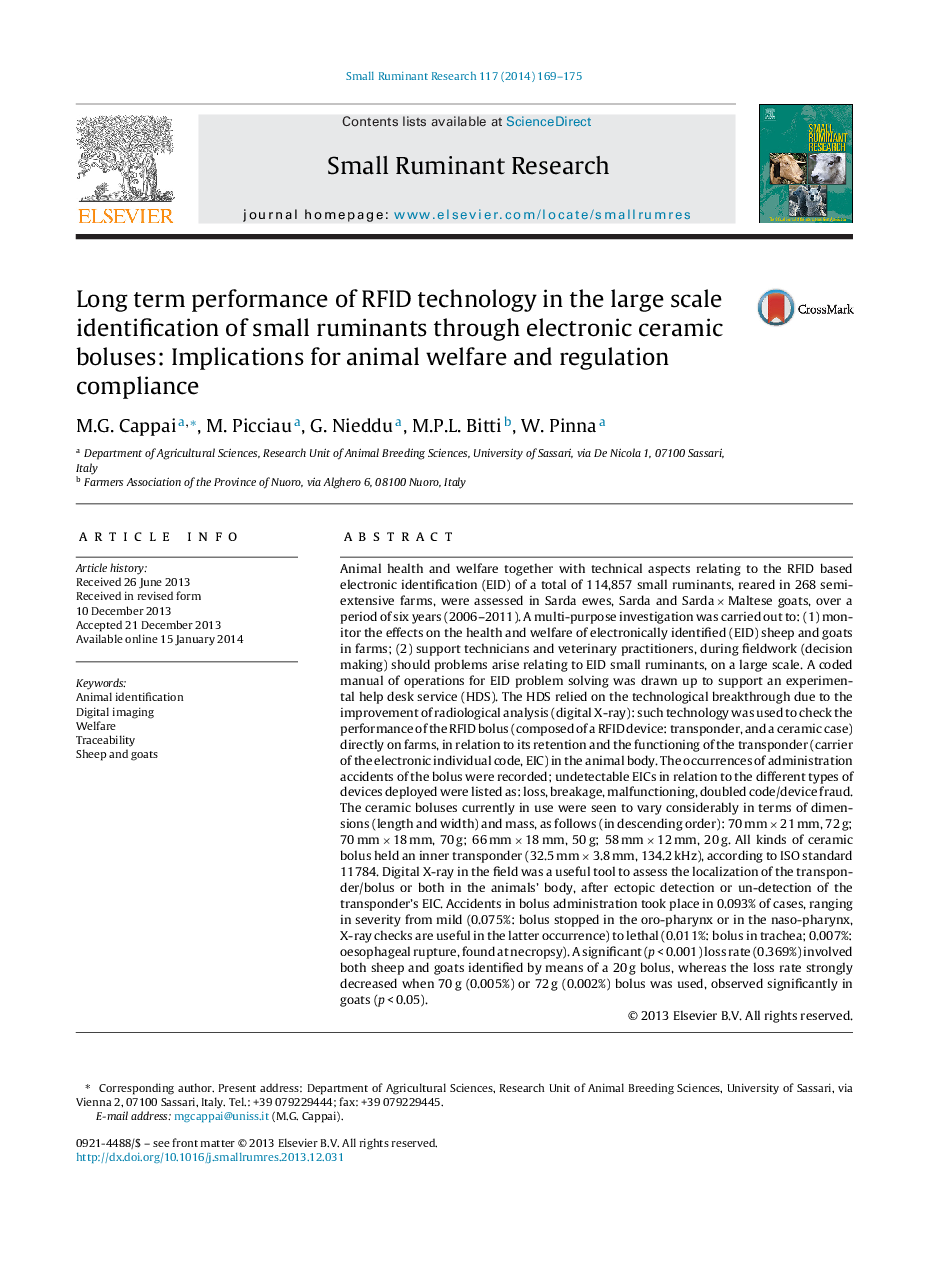| Article ID | Journal | Published Year | Pages | File Type |
|---|---|---|---|---|
| 5795683 | Small Ruminant Research | 2014 | 7 Pages |
Animal health and welfare together with technical aspects relating to the RFID based electronic identification (EID) of a total of 114,857 small ruminants, reared in 268 semi-extensive farms, were assessed in Sarda ewes, Sarda and Sarda Ã Maltese goats, over a period of six years (2006-2011). A multi-purpose investigation was carried out to: (1) monitor the effects on the health and welfare of electronically identified (EID) sheep and goats in farms; (2) support technicians and veterinary practitioners, during fieldwork (decision making) should problems arise relating to EID small ruminants, on a large scale. A coded manual of operations for EID problem solving was drawn up to support an experimental help desk service (HDS). The HDS relied on the technological breakthrough due to the improvement of radiological analysis (digital X-ray): such technology was used to check the performance of the RFID bolus (composed of a RFID device: transponder, and a ceramic case) directly on farms, in relation to its retention and the functioning of the transponder (carrier of the electronic individual code, EIC) in the animal body. The occurrences of administration accidents of the bolus were recorded; undetectable EICs in relation to the different types of devices deployed were listed as: loss, breakage, malfunctioning, doubled code/device fraud. The ceramic boluses currently in use were seen to vary considerably in terms of dimensions (length and width) and mass, as follows (in descending order): 70 mm Ã 21 mm, 72 g; 70 mm Ã 18 mm, 70 g; 66 mm Ã 18 mm, 50 g; 58 mm Ã 12 mm, 20 g. All kinds of ceramic bolus held an inner transponder (32.5 mm Ã 3.8 mm, 134.2 kHz), according to ISO standard 11784. Digital X-ray in the field was a useful tool to assess the localization of the transponder/bolus or both in the animals' body, after ectopic detection or un-detection of the transponder's EIC. Accidents in bolus administration took place in 0.093% of cases, ranging in severity from mild (0.075%: bolus stopped in the oro-pharynx or in the naso-pharynx, X-ray checks are useful in the latter occurrence) to lethal (0.011%: bolus in trachea; 0.007%: oesophageal rupture, found at necropsy). A significant (p < 0.001) loss rate (0.369%) involved both sheep and goats identified by means of a 20 g bolus, whereas the loss rate strongly decreased when 70 g (0.005%) or 72 g (0.002%) bolus was used, observed significantly in goats (p < 0.05).
